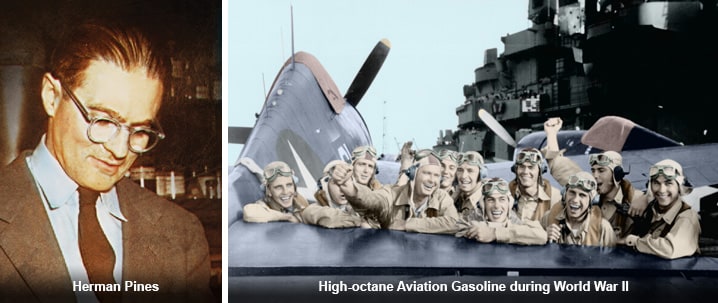Keep up with what’s new.
Connect with us on LinkedIn for news, insights and related topics.

In 1933, Ipatieff introduced solid phosphoric acid as a catalyst to stimulate even higher yields of gasoline from crude oil. This was followed by work in hydrofluoric alkylation, polymerization and isomerization. These developments led to the development of high-octane fuels that could be produced on a large scale, as well as for the production of synthetic rubber.
This became critically important in the years that followed, as the world became engulfed in World War II. While Axis forces struggled for sources of oil to fuel their war effort, Allied forces were comparatively awash in high-octane aviation gasoline. This afforded the Allies a critical advantage in air superiority, allowing tactical advances that likely shortened the war.
While UOP benefited greatly from a pooling of industrial patents during the war, by 1944 the legal basis for the company’s core refining patents was called into question over an unproven accusation of judicial partiality. Customers not only withheld royalty payments, but prepared to sue UOP to recover past payments. In addition, UOP’s longtime president Hiram Halle, architect of the company’s business model, died only hours after learning of the loss of a key court battle.
To avoid becoming ensnared in UOP’s legal problems, the oil companies that owned UOP placed it into a trust to support the American Chemical Society.
Connect with us on LinkedIn for news, insights and related topics.

Did you know that your internet browser is out of date?
Your browser is out of date, and may not be compatible with our website.
Just click on the icons to download a compatible browser.
By closing this window you acknowledge that your experience on this website may be degraded.